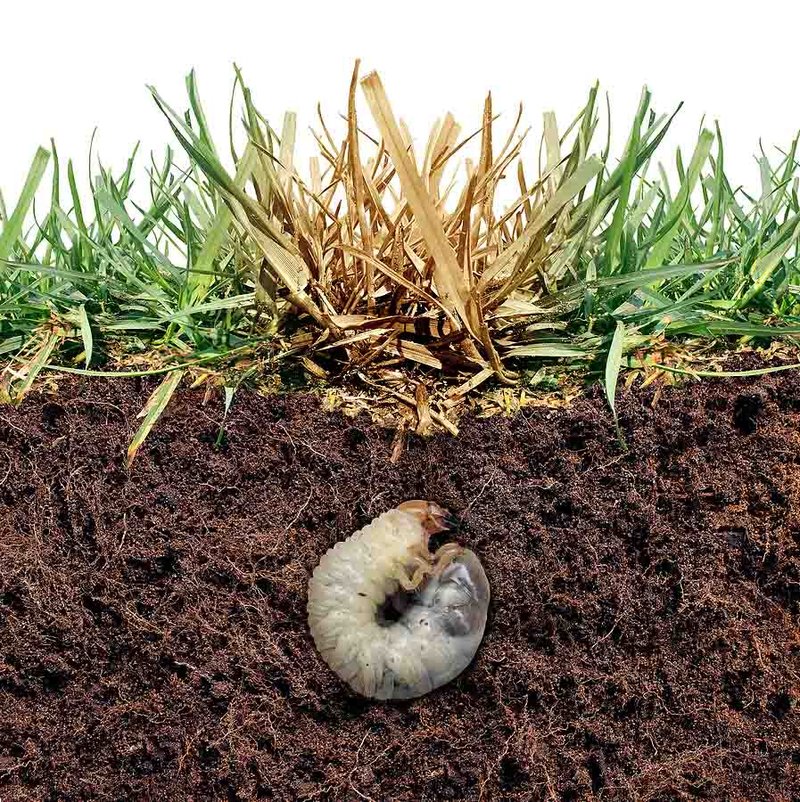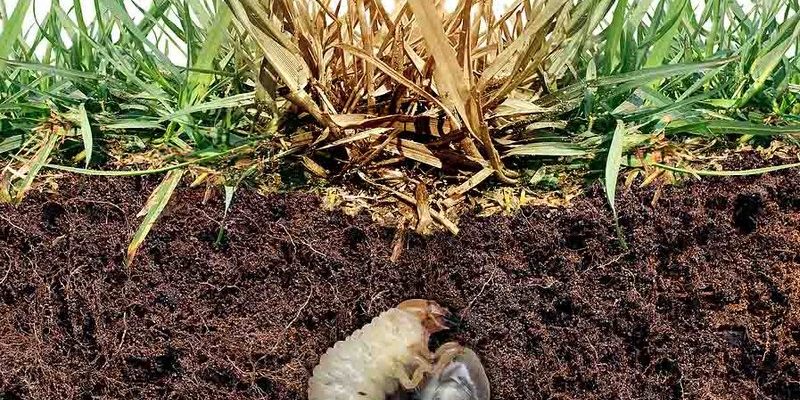
Understanding which lawn types are most vulnerable to grub worms can save you a lot of heartache and effort. Not all grasses are created equal when it comes to their resilience against these pests. Certain types of grass are more attractive to grub worms, which can lead to an infestation if you’re not careful. So, let’s dig in and explore how you can protect your lawn from these unwelcome guests.
What Are Grub Worms?
Before we jump into vulnerabilities, it’s useful to know exactly what grub worms are. They are the larval stage of certain beetles, most commonly the Japanese beetle and the European chafer. These larvae live underground, feeding on the roots of various plants, including grass. As they grow, they can wreak havoc in your yard, resulting in wilted grass and unsightly brown patches.
Grub worms are typically cream or white in color with a C-shaped body. You may not see them until you actively search for them, which makes it crucial to keep an eye on your lawn’s health. If you notice patches of grass that feel spongy underfoot or are easily pulled up, there’s a good chance grubs are responsible.
Common Lawn Types and Grub Susceptibility
Now that we know the enemy, let’s get to the good stuff: which lawns are most at risk? Generally, **cool-season grasses** are more prone to grub infestations compared to **warm-season grasses**.
- Cool-Season Grasses:
– Kentucky Bluegrass
– Perennial Ryegrass
– Tall Fescue - Warm-Season Grasses:
– Bermudagrass
– Zoysiagrass
– St. Augustinegrass
Cool-season grasses thrive in cooler climates and are commonly found in northern areas. Unfortunately, they provide a more inviting environment for grubs than their warm-season counterparts.
Kentucky Bluegrass
This popular lawn choice is loved for its rich color and dense growth. However, **Kentucky bluegrass** is highly susceptible to grub infestations. Its roots are shallow compared to other grass types, making it an easy target for hungry grubs. If your lawn is primarily made up of this grass and you’re seeing yellowing patches, it might be time to check for grubs.
Perennial Ryegrass
**Perennial ryegrass** is another susceptible type, often found in cooler areas. While it establishes quickly and looks great, it shares a vulnerability to grubs. The delicate root structure can be easily damaged, leading to patchy areas or dead spots in your lawn. This grass type is mainly used for quick cover, so if it’s in your yard, keep a close eye on it.
Why Warm-Season Grasses Are More Resilient
You might be wondering why warm-season grasses are less prone to grub damage. They typically grow during the warmer months and are more drought-resistant, making them less appealing to grubs, which prefer moist environments.
- Bermudagrass:
– Thrives in sunny conditions;
– Deep root systems help fend off grubs. - Zoysiagrass:
– Dense growth;
– Naturally resistant to pests due to lower moisture content. - St. Augustinegrass:
– Thick and lush;
– Grubs are less attracted to its structure.
These grasses are better adapted to survive against pests, making them a fantastic choice if you live in a warmer climate or are concerned about grubs.
Environmental Factors in Grub Infestation
The health of your lawn isn’t just affected by the type of grass you have; environmental factors play a significant role as well. Grubs thrive in moist, well-watered environments. If you overwater your lawn, you could be creating a lush buffet for these pests.
Here are some environmental factors to consider:
- Soil Health:
– Healthy soil supports strong grass roots, making them less attractive to grubs. - Smooth Lawn Surfaces:
– Flat, well-mowed grass is less likely to harbor moisture and attract grubs. - Organic Matter:
– High organic matter levels help soil drainage and prevent moisture retention, reducing grub habitats.
Pay attention to these factors, as they can help you manage the risk of grub worms in your lawn.
Signs of Grub Worm Damage
Recognizing the signs of grub worm damage early on can make all the difference in saving your lawn. Here are a few indicators to watch for:
- Brown Patches:
– Irregular brown patches that don’t improve with watering can indicate grubs below. - Spongy Grass:
– If the grass feels spongy when walked on, it could mean the roots are being eaten away. - Increased Animal Activity:
– Higher presence of birds, raccoons, or skunks digging through your lawn can signal grubs underground.
Identifying these signs early allows you to take action quickly, potentially saving your grass from severe damage.
Preventing Grub Infestations
Taking proactive measures is essential for a thriving lawn. Here are some strategies to minimize the risk of grub infestations:
- Use Nematodes:
– Beneficial nematodes can help control grub populations naturally by preying on them. - Maintain Healthy Soil:
– Aerate your lawn to improve drainage and reduce moisture retention. - Water Wisely:
– Water early in the day to allow grass to dry out, making it less inviting for grubs.
Being proactive in your lawn care routine can prevent grubs from taking root and causing chaos.
What to Do If You Have Grubs
If you suspect you have a grub infestation, there are steps you can take to reclaim your lawn:
- Apply Treatments:
– There are chemical and organic treatments available that can help reduce grub populations. - Reseeding:
– If damage is severe, reseeding with resistant varieties can revitalize your lawn. - Consult a Professional:
– Sometimes, getting help from lawn care experts can provide the best results.
Taking swift action can mean the difference between a healthy lawn and a dying one.
In conclusion, understanding the relationships between different grass types and their vulnerability to grub worms can help you keep your lawn looking its best. By recognizing the signs of infestation, maintaining a healthy environment, and taking proactive measures, you can protect your green space from these lawn nuisances. So, let’s get out there and ensure our lawns are grub-free and thriving!

